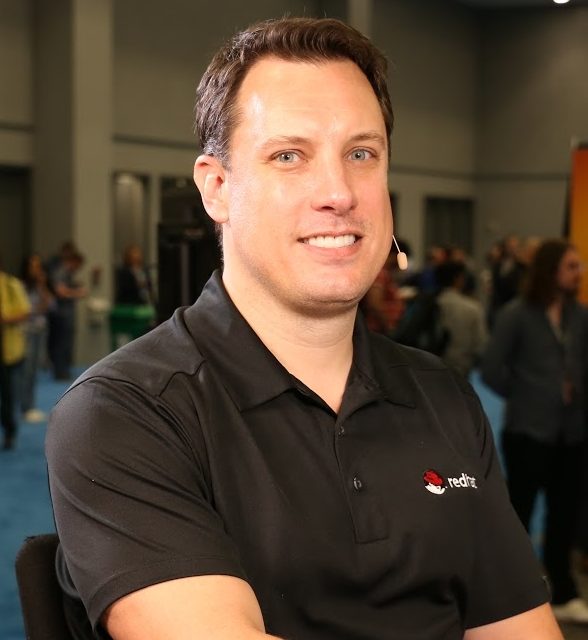 INFRA
INFRA
 INFRA
INFRA
 INFRA
INFRA
While much of the recent rise in enthusiasm for containers in applications has users closely associating that functionality with Docker Inc., members of the Linux community have been eager to point out how long their systems have been using containers in applications and to encourage users to look into further Linux utility for their needs.
“Containers aren’t a Docker thing; containers are a Linux thing. … It’s been a core Linux feature for over a decade now,” said Brian Gracely (pictured), director of product strategy at Red Hat Inc.
Gracely joined Stu Miniman (@stu) and James Kobielus (@jameskobielus), co-hosts of theCUBE, SiliconANGLE Media’s mobile live streaming studio, at DockerCon17 in Austin, Texas, where their discussion covered topics of developer accessibility, community engagement and the growing versatility of containers. (*Disclosure below.)
Gracely was thrilled to see the expanding adoption of containers and the corresponding incorporation of open-source that Linux has been championing. “We obviously believe in the open-source movement, [and now] we’re seeing more and more customers who want to contribute,” he said, adding that seeing it “blossom into viable offerings around the market” was just as gratifying.
And part of that was due to the ubiquity of Linux as developers’ first choice. “If you look at every other project being built around this … they’re all being built around Linux,” he noted.
But Gracely also felt that the growth of container usage owed an incredible amount to the increased ease of use that modern interfaces have enabled.
“I think, originally, when you went and looked at platforms … [there were] lots of ‘opinionated systems’ … [which meant that] the opinion of us, the designers, was going to be forced on you, the developers,” Gracely explained.
These days, recognizing that “developers may not want to use the languages that you force on them,” as well as the need to make coding accessible to a wide slice of developers so as to encourage further growth, the tools for building environments dependent on containers utilization have become much more user-friendly.
And the designers have tried to replicate that friendliness in their own links to other companies to the benefit of both sides, Gracely said, as with their outreach to the Apache Spark community for work to improve the integration of Spark in containers.
“The breadth of what you can do around containers has gotten very, very large,” Gracely said, and for his part, he’s looking forward to seeing just how wide the adoption of containers will spread.
Watch the complete video interview below, and be sure to check out more of SiliconANGLE’s and theCUBE’s independent editorial coverage of DockerCon US 2017 Austin. (*Disclosure: Red Hat Inc. sponsors some DockerCon segments on SiliconANGLE Media’s theCUBE. Neither Red Hat Inc. nor other sponsors have editorial control over content on theCUBE or SiliconANGLE.)
THANK YOU